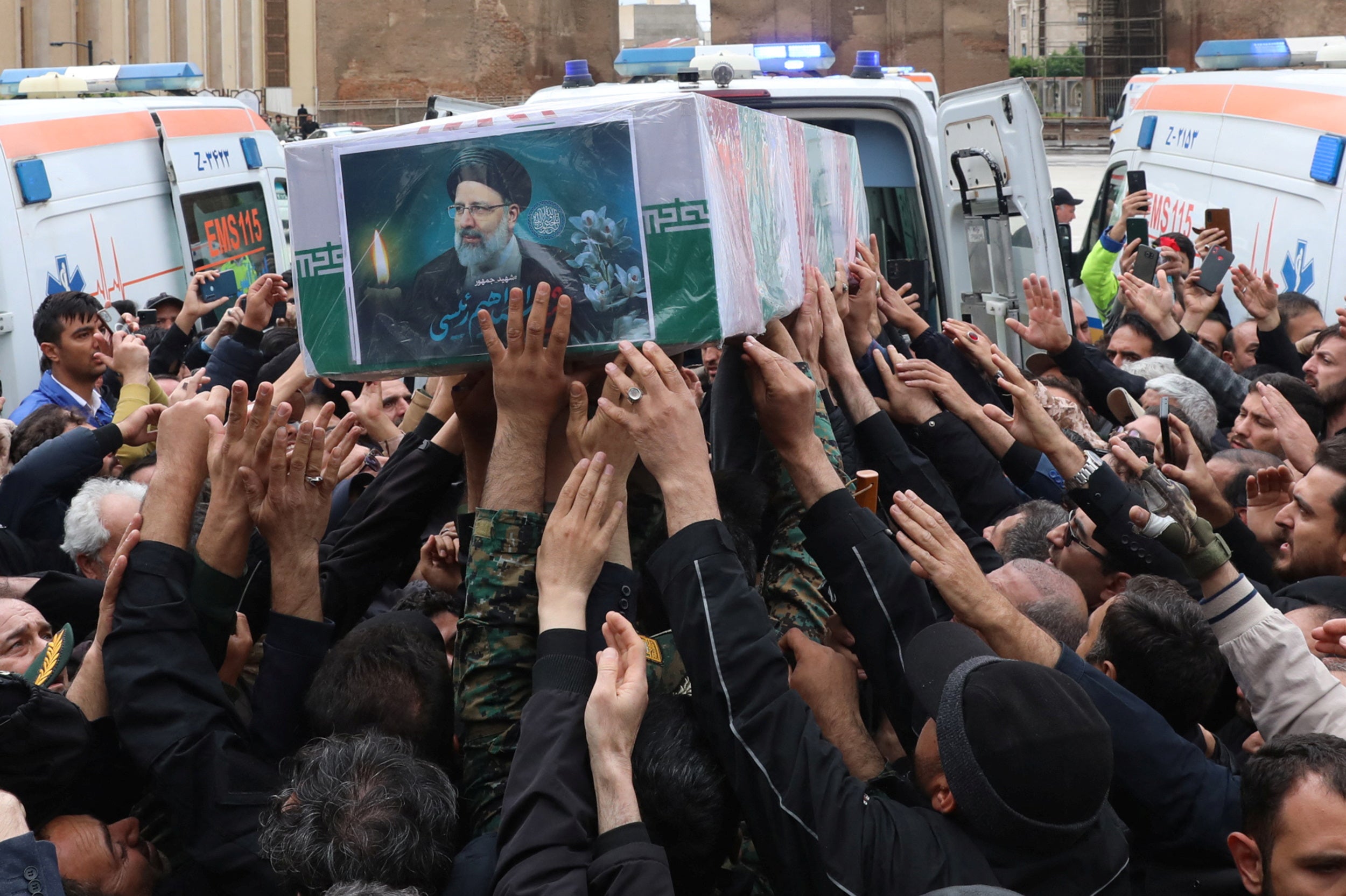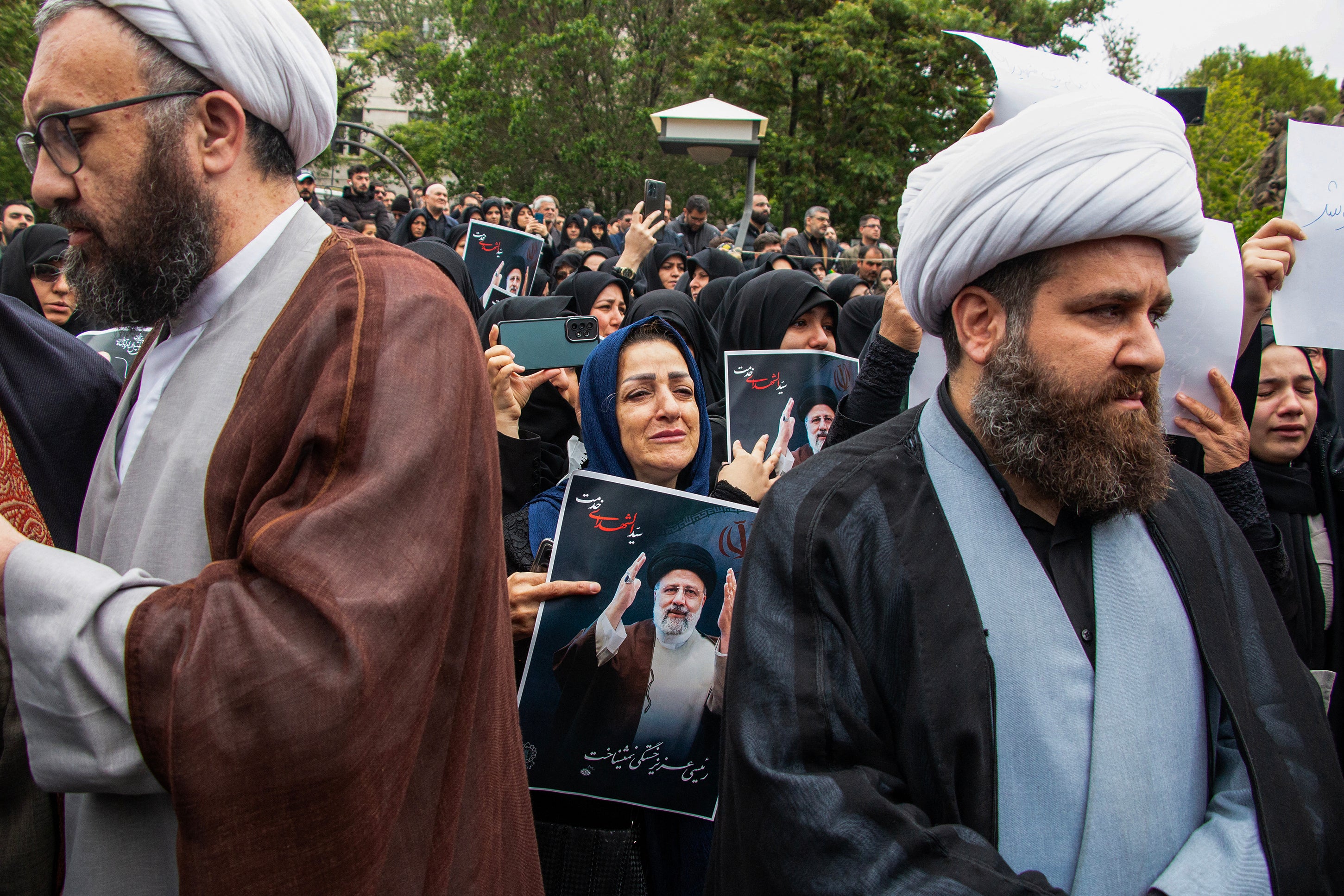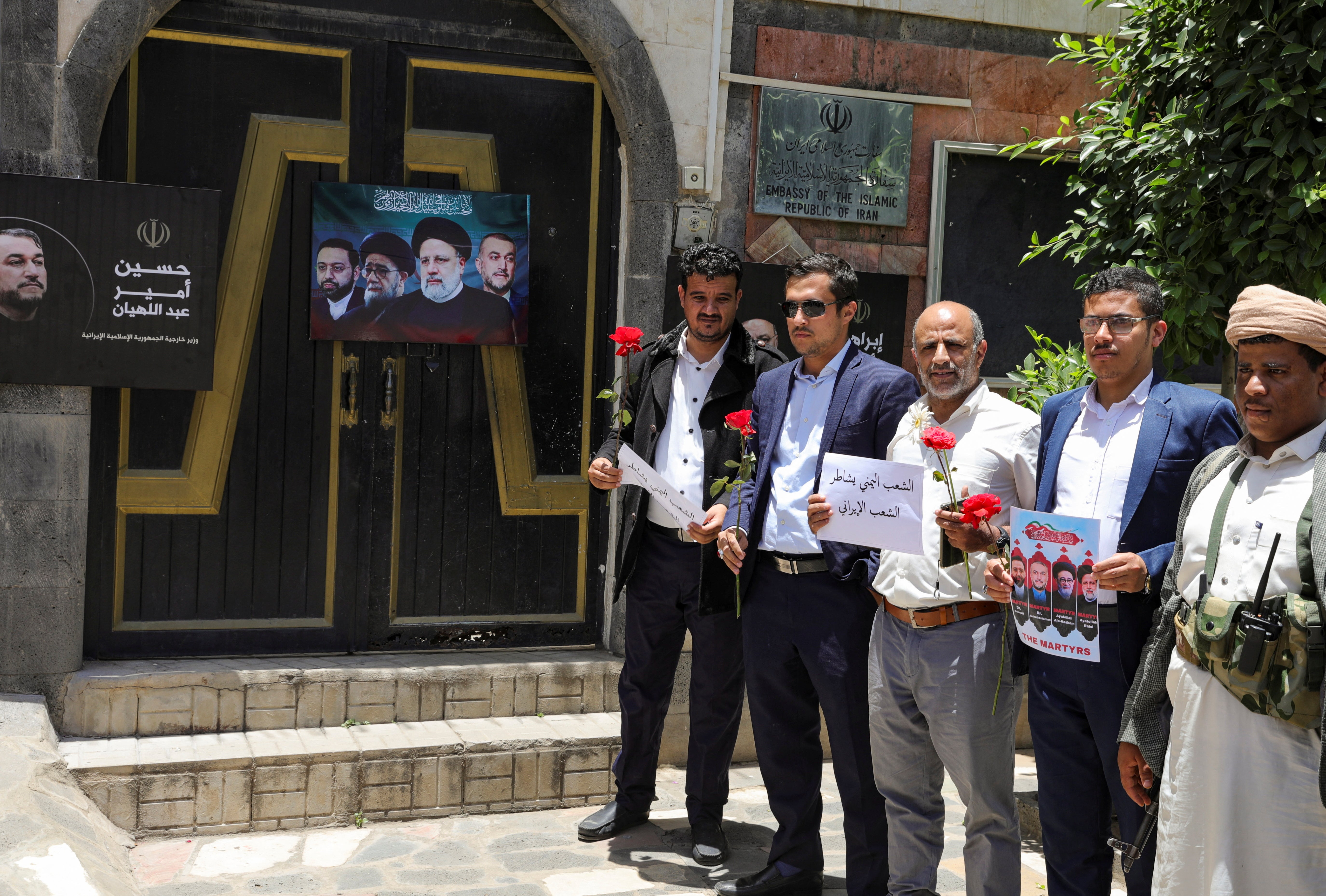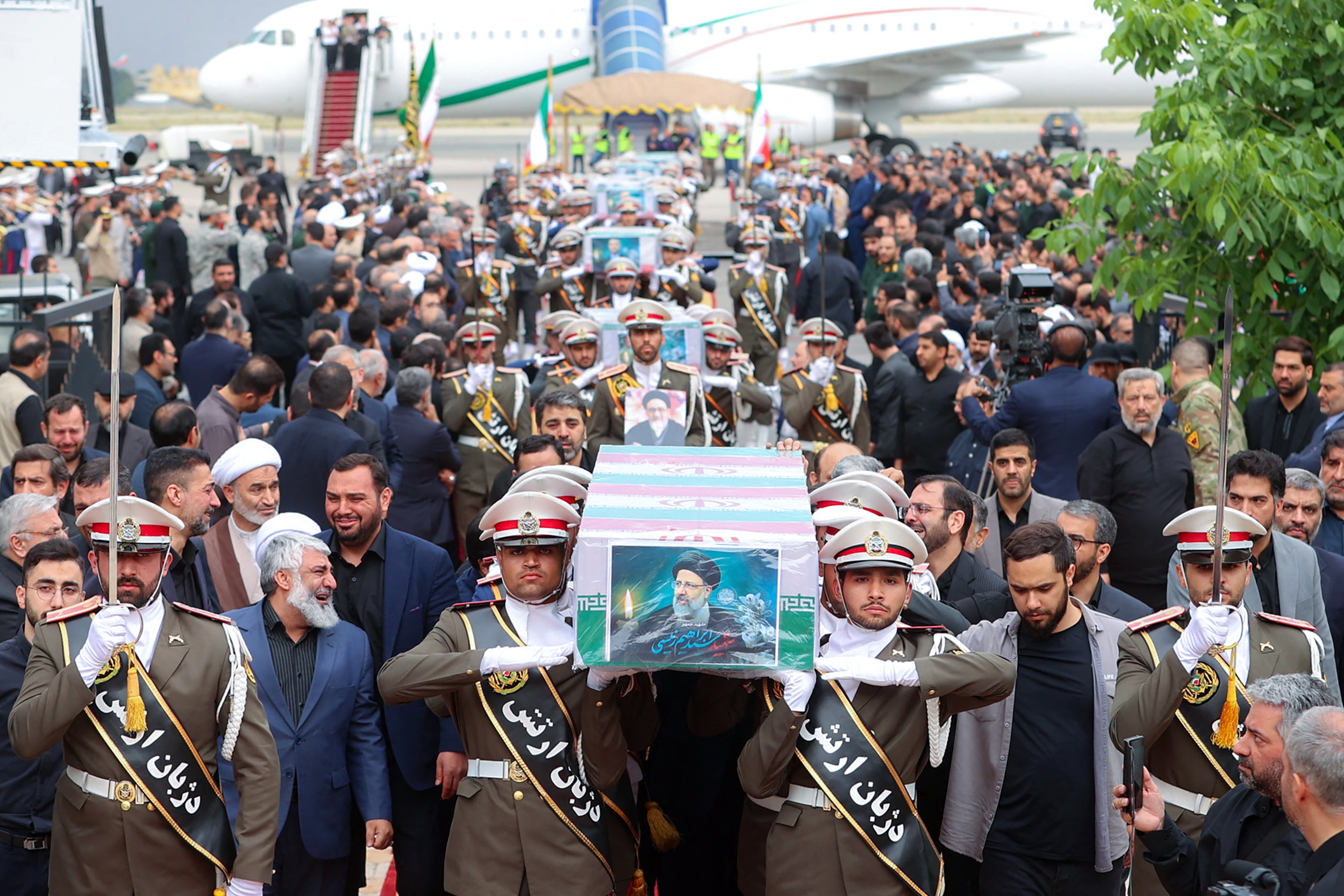
Thousands of Iranians have turned out to mourn the late Iranian President Ebrahim Raisi after he was killed in a helicopter crash on Sunday.
A video broadcast by state media showed hordes of mourners gathering for a procession through the city of Tabriz in northwest Iran, near the site where the politician’s helicopter crashed.
Raisi, 63, was one of eight passengers, including the foreign minister Hossein Amir-Abdollahian, on board the helicopter as it flew through a mountainous region south of neighbouring Azerbaijan in foggy conditions.
Despite the huge crowds on Tuesday, most of whom appeared to be male, swathes of the Iranian population have been celebrating Raisi’s death on social media. It is also unclear what international presence a funeral this week will draw, as Raisi faced US sanctions for his part in mass executions in 1988 and for abuses targeting protesters and dissidents while leading the country’s judiciary. Iran under Raisi also shipped bomb-carrying drones to Russia to be used in its war on Ukraine.
“I don’t feel comfortable sending condolences while Iran is sending drones that are used against civilians in Ukraine,” wrote Lithuanian foreign minister Gabrielius Landsbergis on the social platform X.
The hardline president was unpopular among much of Iran’s young population. After the 2022 death of Mahsa Amini, a woman detained over her allegedly loose headscarf, or hijab, weeks of protests rocked the country. The crackdown that followed the demonstrations killed more than 500 people and saw over 22,000 detained.



Nonetheless, two days after his death, mourners in Tabriz swarmed a large truck that was carrying Raisi’s coffin, as well as those of the other seven killed, through the streets of the city. It was adorned with flowers and draped in the Iranian flag
State TV broadcast live images of mourners, many of them dressed in black, beating their chests while the truck drove slowly through the crowd.
To restore damaged legitimacy following a historic low turnout of around 41 per cent in March’s parliamentary election, Iran’s rulers must stir up public enthusiasm to secure high participation in the early presidential election that will be held on 28 June.
“Everyone has come to bid farewell to the... president and his companions regardless of their faction, ethnicity or language,” claimed Tabriz lawmaker Masoud Pezeshkian.
Images also showed people in the capital of Yemen, Sanaa, which is controlled by the Iranian-funded Houthi militia, as well as in an Iranian Islamic centre in Peshawar, Pakistan, publicly mourning the death of Raisi.
His body later arrived at the Iranian capital of Tehran’s Mehrabad airport, where government and military officials lined a red carpet. Many could be seen crying as a military escort carried the coffin.
A seat on the presidential plane was left empty during the flight, according to images published by state media. It was covered only in black cloth and had a picture of Raisi on it.

The remains were then transferred to the holy city of Qom, where Raisi studied at a seminary as a teenager. Many of the clerics who make up Iran’s theocratic elite are trained there.
The coffin will later return to the capital to lie at the Grand Mosalla Mosque before being transferred to Raisi’s hometown of Mashhad, in eastern Iran, for burial on Thursday. Raisi’s body will be moved to the historic Imam Reza shrine, where Ayatollah Khamenei will conduct prayers, according to state media outlet Mehr News.
Iranian leaders announced a public holiday and the closure of offices all over the country on Wednesday so that processions can take place in the capital, while five days of mourning have also been officially declared.
Until the election on 28 June to choose a new president, Vice President Mohammad Mokhber has been appointed to assume interim duties.







